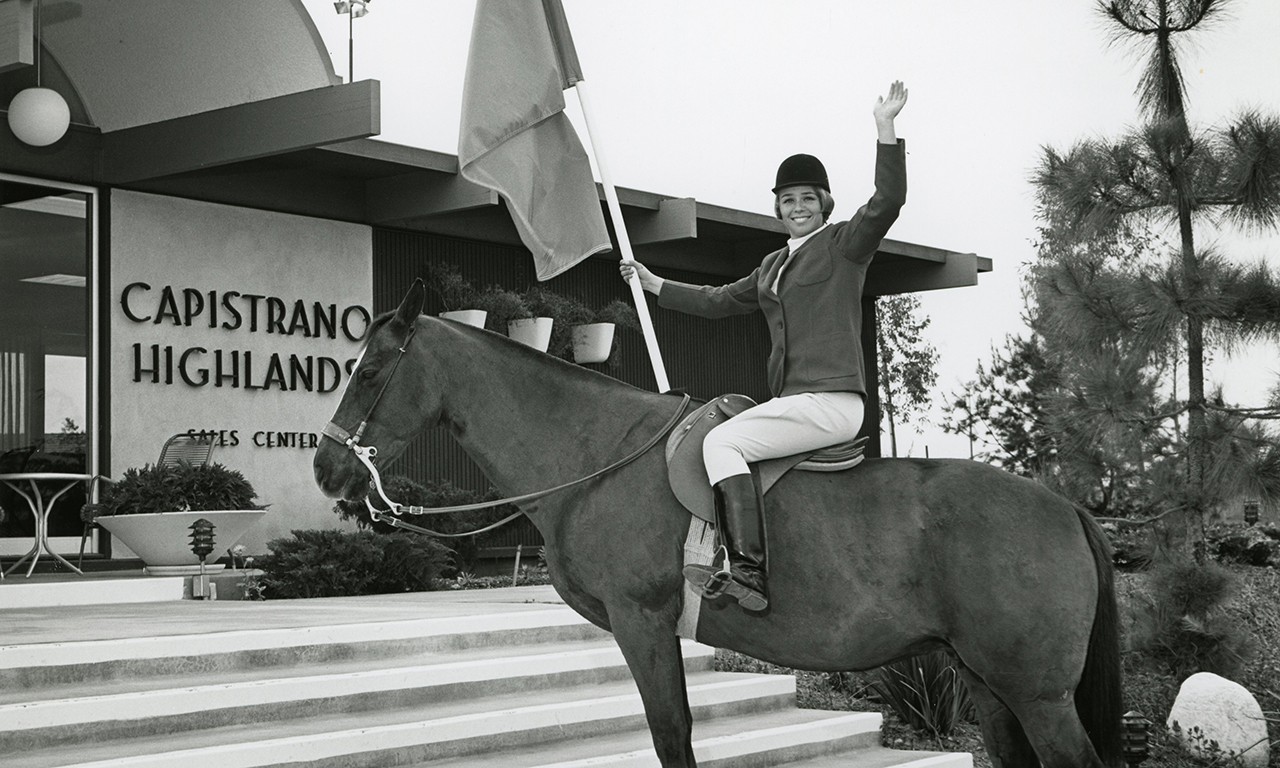 |
Women Riding a Horse on the Steps of a Building, 1960-1980
Rene Laursen Photography (American); Irvine, California
Photographic print; 10 x 8 in.
31704.138
Gift of Mr. Rene Laursen |
The Ranking
Time is an ocean and a river and a sun-dried puddle—there could always be more of it but most of the time we get by and appreciate what we’ve got. This week the Bowers Blog waves a fond farewell to a staff member who has served at the museum for over a decade. Farewells are always opportunities to give pause and—honoring this person's long-time affinity for several of these objects—this post looks at some of the paws in the museum’s collections, specifically the littlest ones. Objectivity is a difficult thing to come by when evaluating subjective qualifiers like “cute” and “adorbs,” but that has not stopped us from creating a ranking of the top ten objects in the museum with cute and little hands.
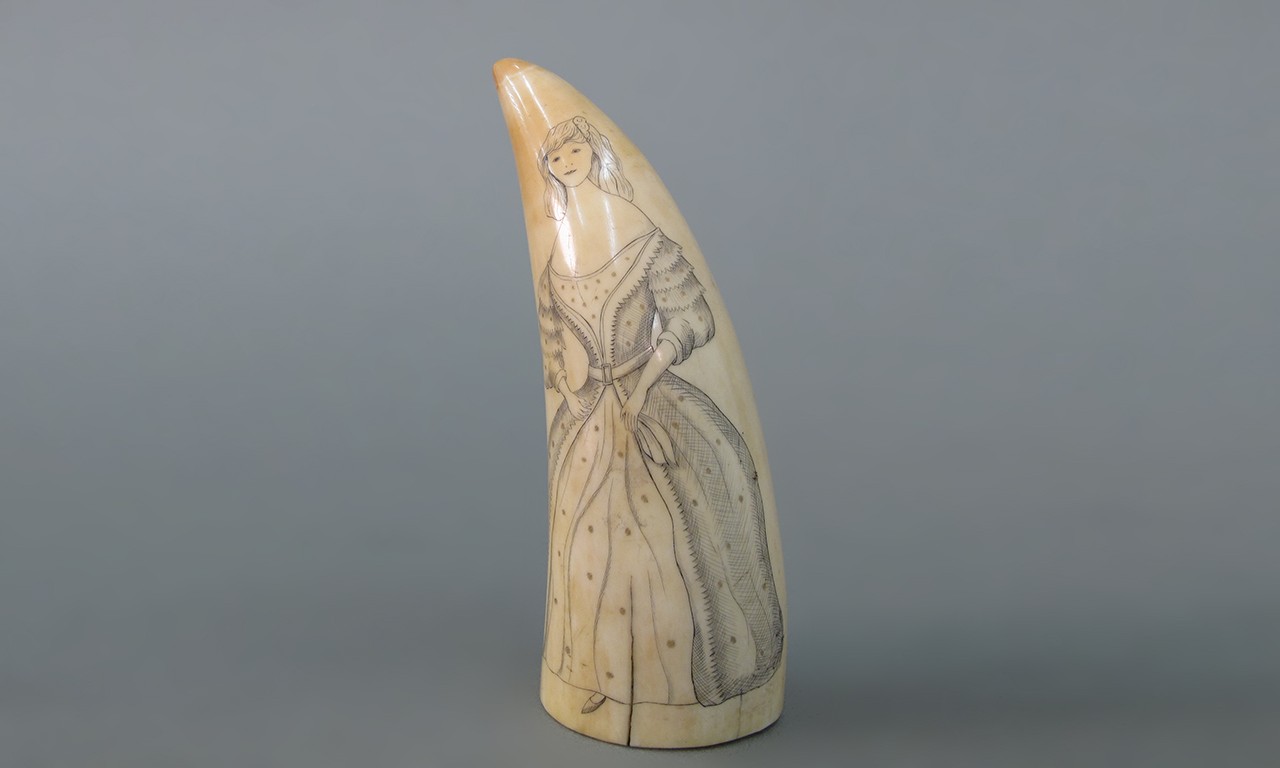 |
Scrimshaw of a Victorian Lady, 19th Century
Unknown artist (American); North America
Sperm whale ivory and ink; 6 1/8 x 2 1/8 x 1 3/4 in.
2011.25.84
Gift of Dr. and Mrs. Burton W. Fink |
10.
Really earning its tenth place slot through the distorted proportions of the rest of its principal figure’s body rather than the size of its hands is this piece of carved scrimshaw. Often carvings such as this would have been pulled directly from book illustrations, though this may have been an original work by the unknown New England scrimshander who made it.
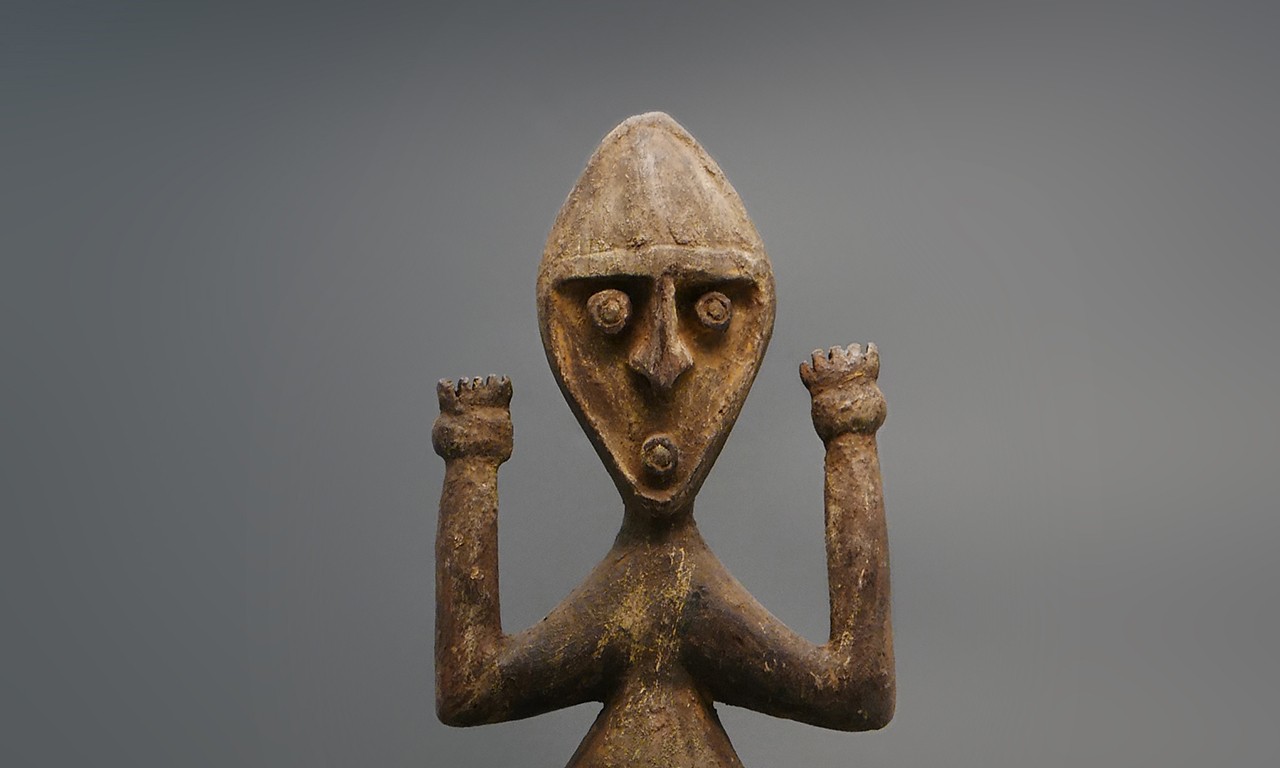 |
Ancestral Spirit Figure, mid 20th Century
probably Nagum Boiken culture; New Guinea, East Sepik Province, Papua New Guinea, Melanesia
Wood and pigment; 19 1/4 × 6 × 1 3/8 in.
2018.14.33
Anonymous Gift |
9.
The squat fingers of this ancestral spirit figure from the Nagum Boiken of Papua New Guinea’s Prince Alexander Mountain range make it stand out in terms of rankings. Boiken art is predominantly used as way of swiftly conveying concepts of masculinity, femininity, power, and nature. Using specific motifs and shapes, art became a kind of visual shorthand for transmitting fundamental norms about their society, about their place as a man or women, their purpose in the universe.
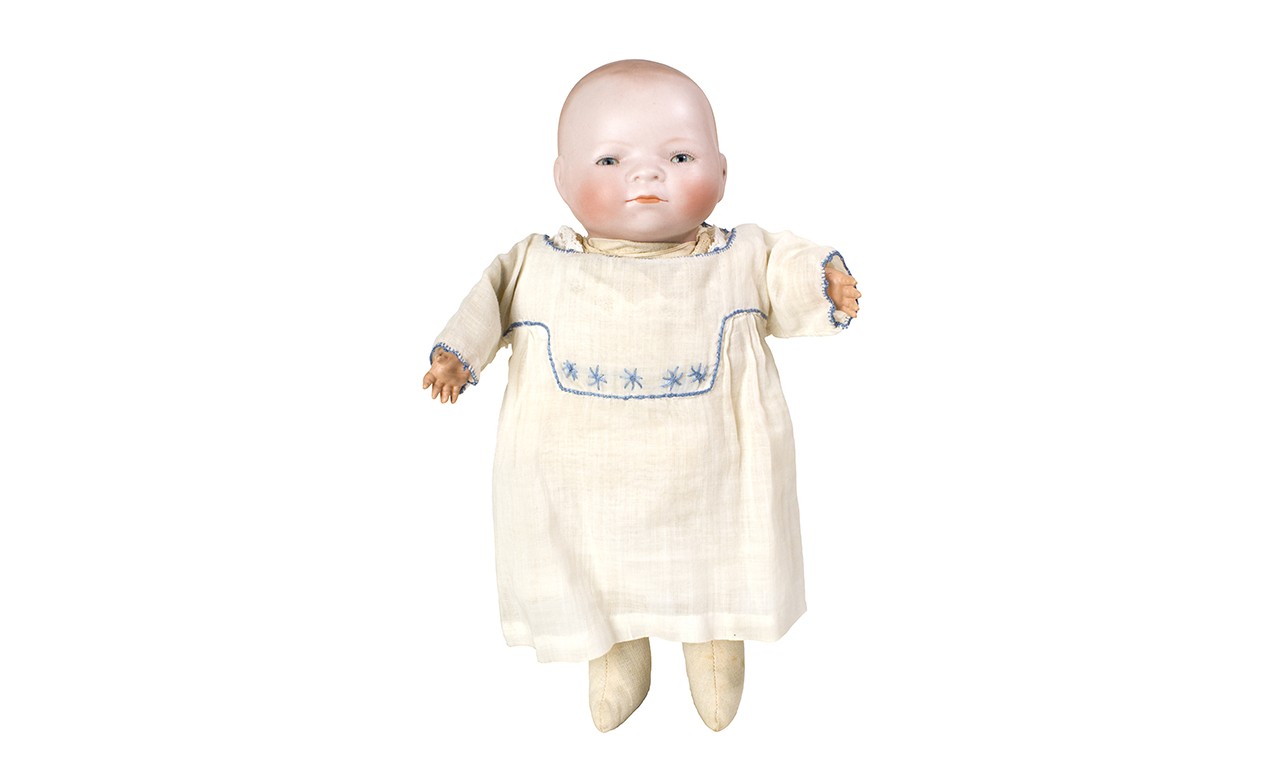 |
Bye-Lo Baby Doll, 1920s
Grace Storey Putnam (American, 1877-1947)
Bisque and cloth; 10 1/4 x 7 3/4 x 3 1/4 in.
76.5.1
Gift of Mrs. Elizabeth Lyser Powers |
8.
It is perhaps unsurprising that a baby doll has some of the smallest hands in the collection, but the hand size of Grace Storey Putnam’s 1920s-era Bye-Lo Baby Doll is too teeny to be disregarded in any Bowers ranking. This doll was the first ever to take on the appearance of an infant and was inspired by a three-day old girl that the designer met at a Salvation Army nursery.
 |
Equestrian Portrait of Don Jose Andres Sepulveda, c. 1856
Henri Joseph Penelon (American, [b. France] 1827-1885)
Oil on canvas; 43 x 35 in.
2429
Gift of Judge Thomas D. Mott II |
7.
Henri Joseph Penelon has been attributed as the first artist-photographer of Los Angeles. While this may not excuse the disproportionately enormous head and relatively little hands of Don Jose Andres Sepulveda in this painting, his lack of competition might explain it. In seriousness, this iconic work is a much-beloved and oft-published mainstay of the museum’s collection.
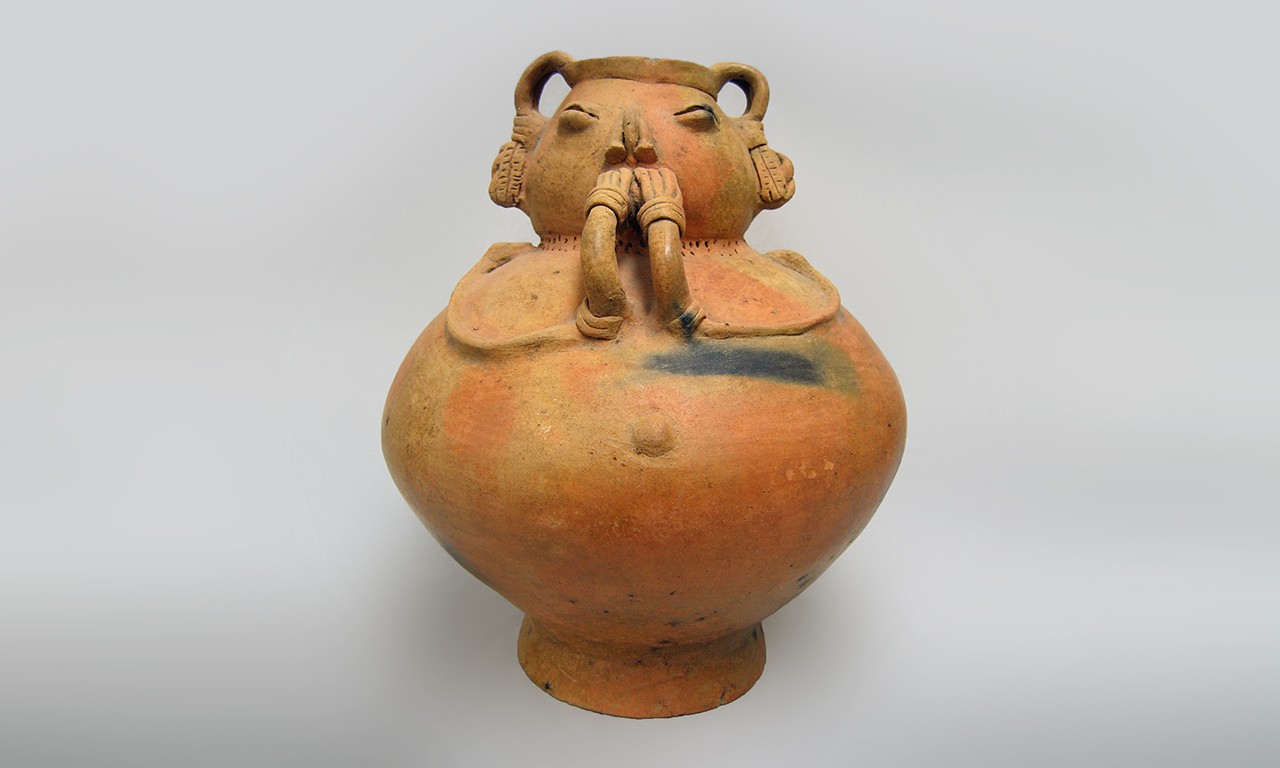 |
Vessel, 200 BCE-100 CE
San Agustin, Colombia
Fired clay; 15 x 12 in.
2006.9.1
Gift of Dr. Lawrence D. and Mrs. Rosemary Sporty |
6.
Though it might be difficult to gauge whether hands are correctly proportioned when evaluating a globular vessel rather than a more figurative object, having its arms held to its mouth makes this ceramic from San Agustin, Colombia a delightful find. Anthropomorphized urns appear with some frequency in pre-Columbian funerary art; however, the morphology of this object is almost entirely unique.
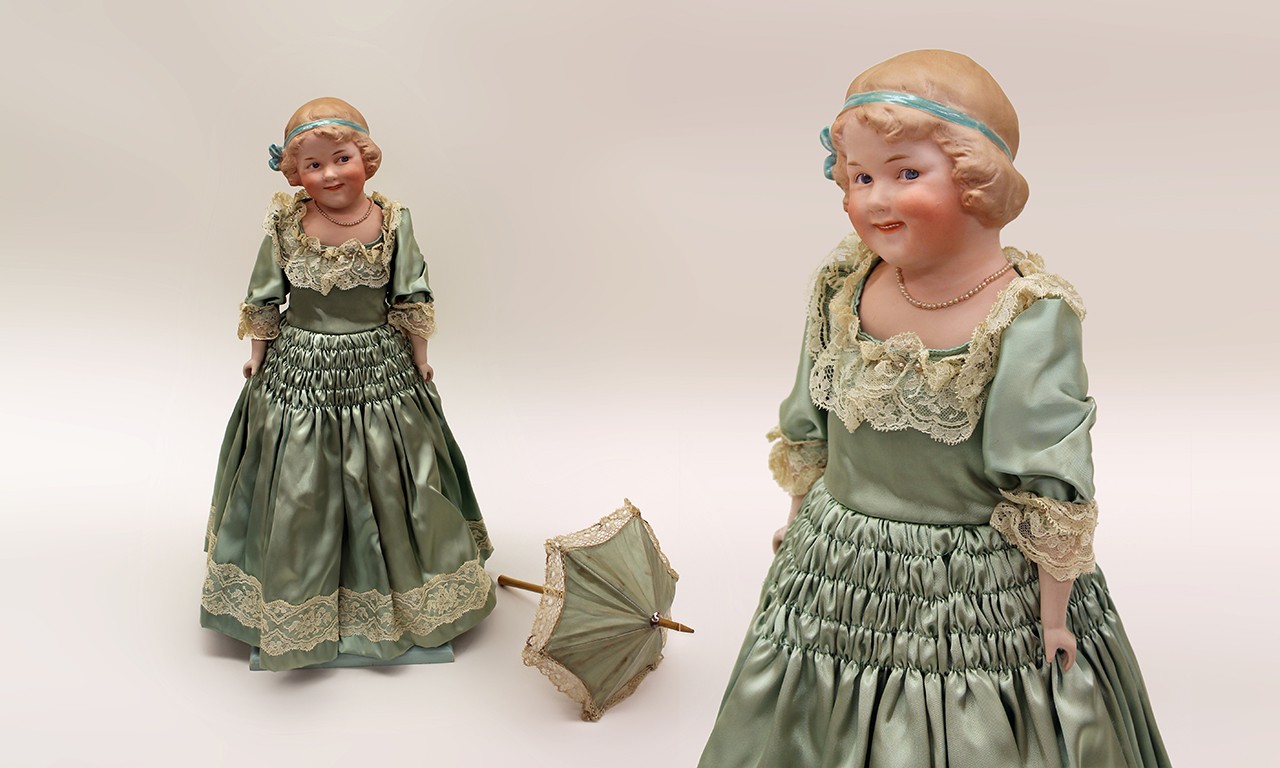 |
Coquette Doll, 1903-1912
Made by Gebrüder Heubach, Germany
Bisque, satin, lace and muslin; 21 in.
7893
Irene P. Cutter Memorial Doll Collection |
5.
The secret that this doll’s coy glance holds is that its arms are way too small for its body. This handmade toy hails from Germany where it was made by Gebrüder Heubrach—a well-known doll maker of the late 19th and early 20th century. This style is known as a coquette doll which is a trade name given to dolls whose eyes flashed to one side. Between 1903 and 1912 such eyes were commonly referred to as "flirting eyes."
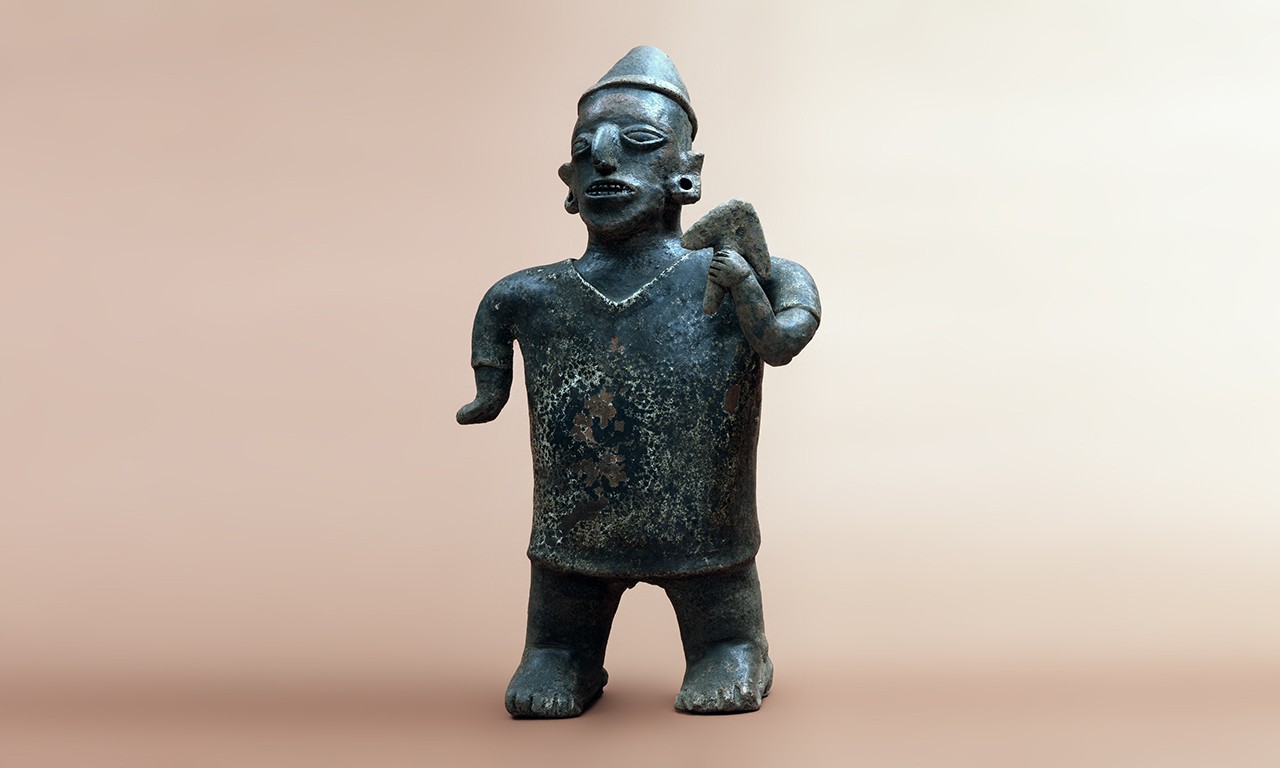 |
Standing Male Figure in Long Shirt, 300 BCE - 200 CE.
Ixtlan del Rio style; Nayarit, West Mexico
Ceramic and paint; 15 1/4 x 8 1/2 x 3 3/4 in.
F78.78.3
Anonymous Gift |
4.
It is hard not to be a fan of this fan-shaped-ax toting figure, whose delicate digits juxtapose starkly against its vast torso. This standing warrior would have been used as a funerary offering. Its clothing may have been indicated some special function or status in the society of the culture that existed in Mexico’s Nayarit state approximately two centuries ago.
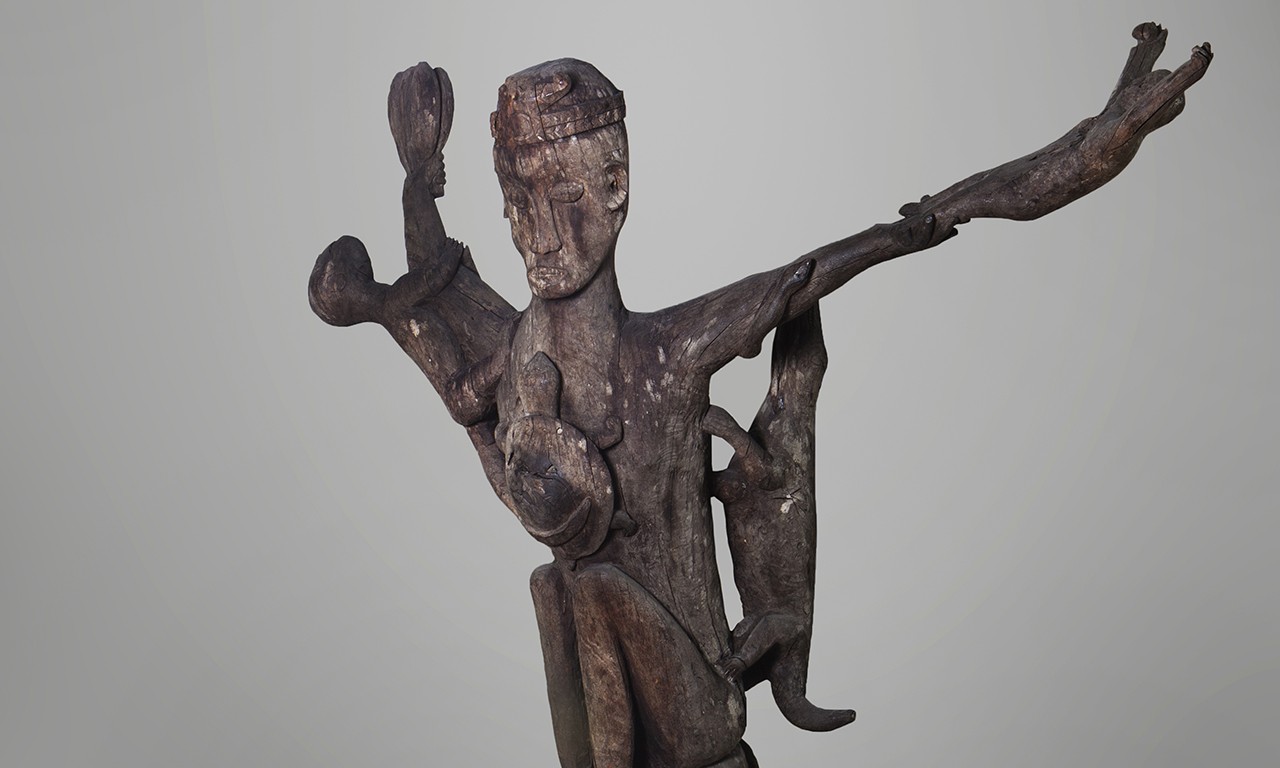 |
Ancestral Sculpture (Hampatong), c. 1930
Ngaju or Benoa Dayak culture; Borneo, Kalimantan Tengah (Central Kalimantan) Province, Indonesia
Ironwood; 67 × 48 × 30 in.
2015.20.1
Gift of Mr. Mark Johnson |
3.
Unique to this post, this object has two individual sets of qualifying mitts. The first and most evident of these are the larger hands of the hampatong ancestral figure from the Ngaju or Benoa Dayak culture of Borneo. The second pair are the adorably sized hands of the infant child being loosely swung by the hampatong. Many of these figures appear quite fierce as are used to protect villages and other spaces against dangerous spirits with ill will, this sculpture appears to instead rely on the animals and child around it, all of which would have empowered it.
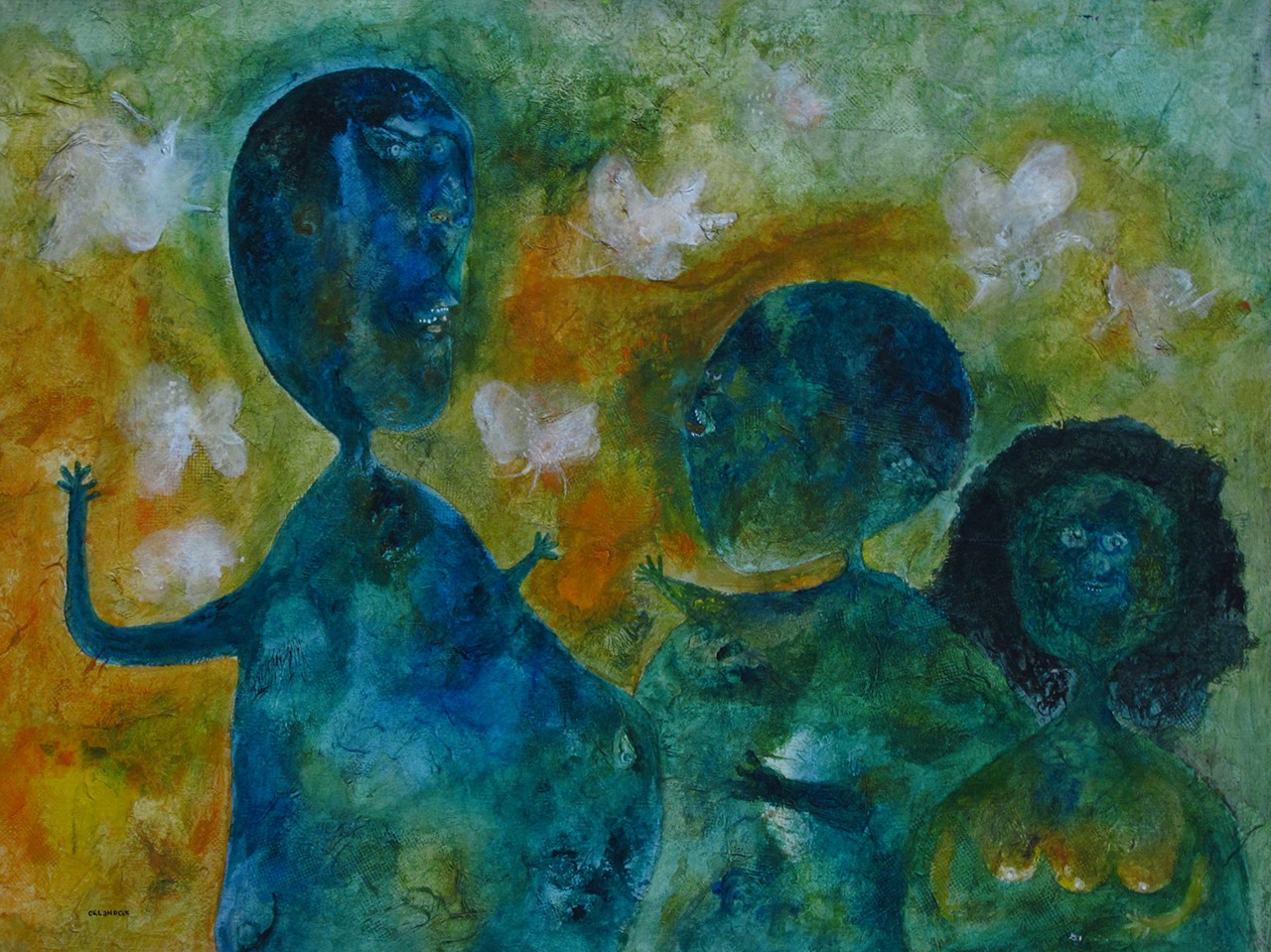 |
Encandemo, 1960s
Felipe Orlando (Mexican-born Cuban, 1911-2001)
Oil on canvas; 23 5/8 x 31 7/8 in.
79.11.1
Gift of Mr. and Mrs. Jack Brisacher |
2.
Gazing upon the hands detailed in this Felipe Orlando painting does not at all belie that the three subjects purportedly ate people, even if their faces might. As a Mexican-born artist who studied in Cuba, Orlando considered himself a world artist. This was likely painted in Cuba during the 1960s. Based on a typed Spanish description on its reverse, the three are cannibals, however, the title, Encandemo, appears to be a ritual role in Cuban Santeria. The Encandemo assumed the duties of a cook for ritual offerings. Another interesting bit of trivia is that Orlando's mother would have excelled at this ranking as she was herself a palm reader.
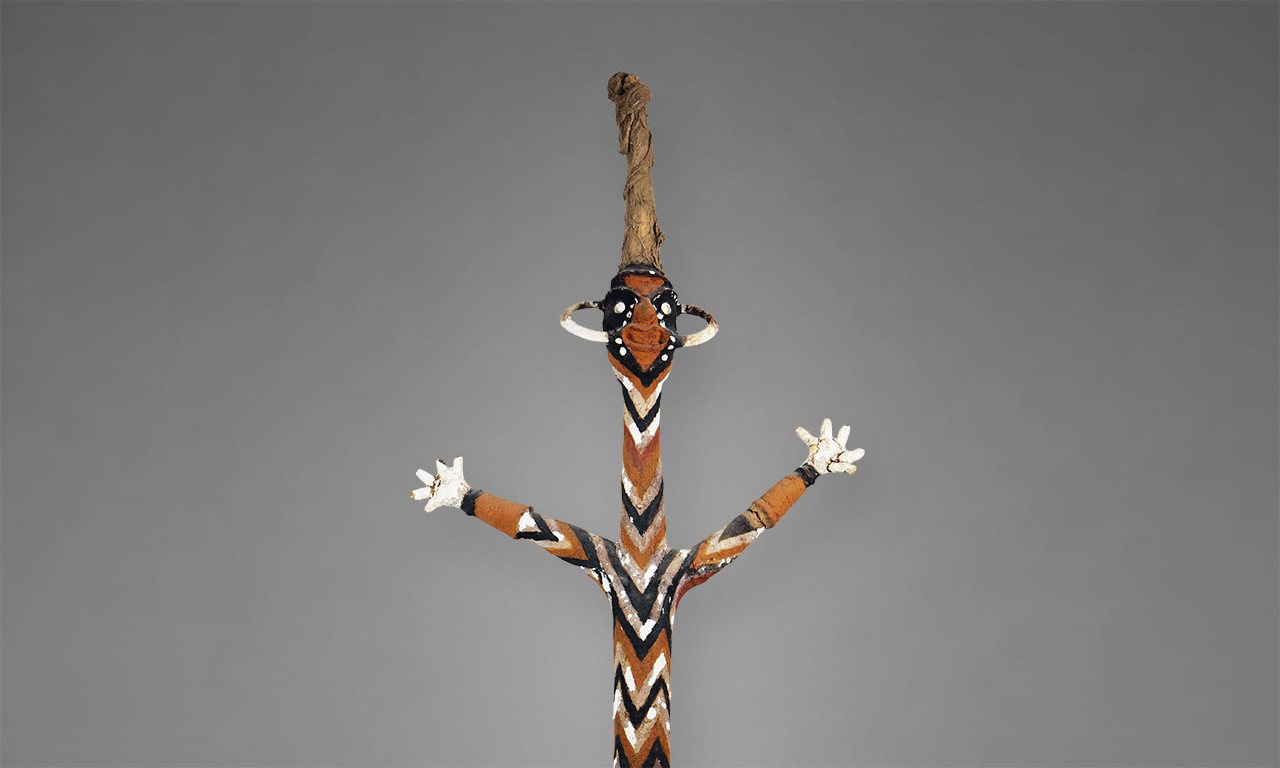 |
Dance Staff (Temes Nevinbur), mid 20th-late 20th Century
Malakula Island, Malampa Province, Vanuatu, Melanesia
Wood, vegetal paste, earth, paint and boar tusks; 60 × 26 × 6 in.
2015.4.1
Gift of Mrs. Joyce Black |
1.
Proudly coming in first place are the hands of this temes nevinbur from Malakula Island in Vanuatu. Temes nevinbur figures are often referred to as puppets or marionettes and are danced at funerals and initiation ceremonies. Scholars disagree on who it is that they represent. Some say that they depict young boys, while others indicate that they are the intangible spirits of ancestors. Either way, one has to hand it to the temes nevinbur for coming in at number one.
Text and images may be under copyright. Please contact Collection Department for permission to use. References are available on request. Information subject to change upon further research.












Comments